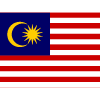Mangrove forests are a unique ecosystem which are located between the land and sea. Mangroves can be found in 118 countries in the world representing one per cent of the tropical forest worldwide, and less than 0.4 per cent of the world forests. Mangrove swamps are a very important ecosystem to human life and the diversity of life that inhabit it.
Firstly, humans are highly dependent on the products of the mangrove forest (timber resources) and fishery resources (mangroves become the breeding grounds and early growth of various species of oceans living on coral reefs). Next, mangroves contribute to coastal protection from erosion and protect the environment from extreme weather changes. Besides this, the mangrove forest is important in maintaining water quality, trapping sediments and filtering pollutants originating from activities in the surrounding areas. This is compatible with the Quranic verse which means: “He rules (all) affairs from the heavens to the earth; according to His calculations” (Surah Al-Sajdah, 32: 5).
But unfortunately, not many are aware of the importance of the mangrove ecosystems, causing the ecosystem to be neglected, thus leading to the threat of its extinction. This is evident throughout Malaysia today in which the mangrove ecosystem is becoming increasingly threatened by various unhealthy human activities such as: i) reclamation of land for various uses such as aquaculture, agriculture, industrial or housing, coastal resort development, ports, roads, airports and oil excavations ; ii) widespread logging activities; and iii) pollution problems.
Most recently, it was reported that the sole surviving mangrove forest on government land located in the middle of Pekan Baru Batu Maung and adjacent to the Bayan Lepas Industrial Park was being threatened by irresponsible dumping of construction and industrial wastes. Such an activity had inflicted the river across the mangrove swamp that turned brackish and became mixed with solids, along with the waste material disposed of at the dumpsite catching fire and scorching some of the mangrove tress that surrounded the open ground.
Such an incident should not have happened. Instead, the Batu Maung mangrove should be given better protection, and needs urgent as well as stringent action by all parties concerned be they the local, state and federal governments which should ensure that the sole remaining mangrove was fully protected and conserved.
All parties should be aware that the mangrove ecosystem is a valuable asset to the country and is among the region’s productive ecosystems in the world. Not only is it an important area of human life, but it also has benefits to the ecosystem and economy.
The survival of the mangrove ecosystem is also important to conserve because of its great function in helping to protect coastal areas as well as controlling erosion. As an example, the mangrove ecosystem acts as wind breakers, that is, it gives protection against strong winds of coastlines from disasters. If the mangrove ecosystems continue to be destroyed, then the affected areas will be exposed to rainstorms, floods and erosions.
Yet, many still do not realise the importance of the existence of mangrove ecosystems. In fact, it was found that the current level of public awareness about the importance of mangrove ecosystems is still relatively low in comparison to other ecosystems. This has led to conservation efforts of the ecosystem to reach a critical level in Malaysia at present.
Hence, in preserving the mangrove swamp ecosystems, efforts to foster awareness among communities should be done proactively, so that the ecosystems are not marginalised, which can then contribute to their extinction in the future. Perceptions of some members of the community who consider that mangrove as idle ecosystems need to be changed.
Such people should be given appropriate exposure in terms of accurate information and knowledge from time to time on the ecosystem which also has its own important role as supplied by other ecosystems. This effort is crucial in order for the survival of the mangrove ecosystem to be maintained not only for the benefit of the universal human life, but also its survival as an important habitat for plants and animals rarely found in other ecosystems.
For such an effort, all parties need to be committed to ensuring that efficient management of the mangrove ecosystem can be achieved by trying to improve the weaknesses of the past management system, enhancing knowledge of the mangrove ecosystem and sharing information about it that is accurate to be channelled to all levels of the society.
In addition, the restoration of mangrove ecosystems needs to be the main agenda in the sustainable development of the country. The high commitment at the leadership level towards this effort is necessary to ensure proactive action is taken in order to sustain the sustainability of mangrove ecosystems.
For example, mangrove replanting efforts should be taken seriously from time to time by getting the community to be involved in the activity to understand and learn more about the existence of the ecosystem in the future. Their participation in such activities will certainly raise awareness amongst them to safeguard and preserve the mangrove ecosystems. Public awareness is crucial in creating a generation of people who are concerned about conservation of ecosystems and other aspects of natural resource management. With such awareness, conservation teams can hopefully be inspired to work together with the authorities to ensure sustainable production and management of the environment.

